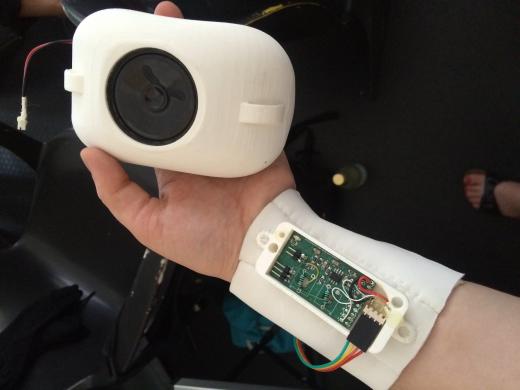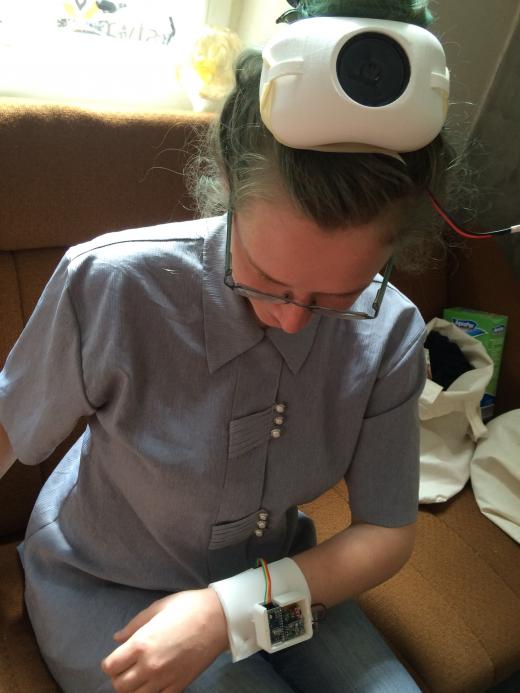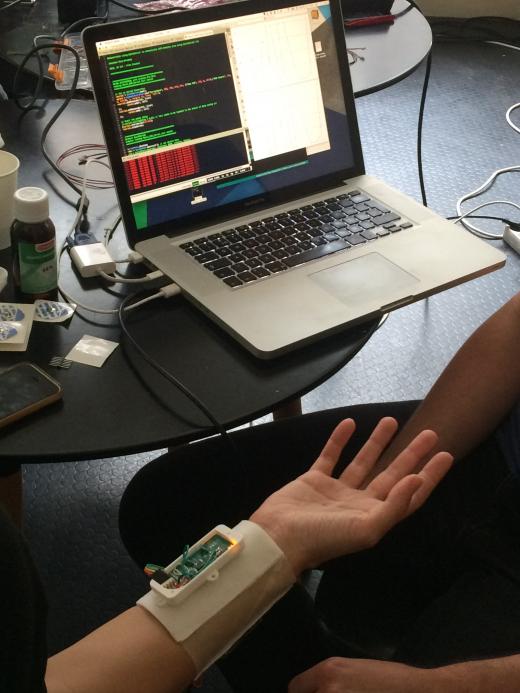DIY: How to become a Sound-Cyborg
DIY: How to become a Sound-Cyborg

“Where technology and nature was traditionally seen as opposed, they now appear to merge or even trade places. We must no longer see ourselves as the anti-natural species that merely threatens and eliminates nature, but rather as catalysts of evolution. - we must learn to think transversally.”
- Eric Kluitenberg, Techno-ecologies
Thinking transversally calls for new artistic practices. Practices which embrace nature and technology at the same time. Therefore the boundaries between nature and technology need to get erased and blurred. The boundaries between our bodies and the outside vanish through augmenting the senses with technologies. For instance, one could start with translating the body’s reaction on one’s own environment into sound. Or with translating the body’s movement into several sounds, which get integrated into the surrounding soundscape of the environment. How to intensify and expand our senses can be found in this very DIY of how to become a sound-cyborg.
There is already an array of products which promise to quantify, augment or accelerate the self. The Apple watch or wearables measuring someone’s gym performance are only two examples. But none of those devices leaves room for artistic expression or the speculative. Through their closed designs they rather draw a distinct line between the wearer and her environment.
The device we got to try out during the Performing Sensory Cartographies workshop had a different approach. It allowed us to interact with our bodies and our environment at the same time. And it gave us an idea about the direction future artistic creations, which using tools bridging nature and technology, are taking.

In order to interact with our environment we got a self-made wearable. The artists Jonathan Reus Brodsky and Sissel Marie Tonn are working with so called sensation collectors. These little devices help with measuring human’s reaction on their environment and convert those into tones. The project Cartographies of Human Sensation is inspired by the body’s ability to act as a filter, singling out and amplifying events in a sea of impressions.
This item didn’t persuade through its sleek design and functionality, but rather makes you look like you just stepped out of a sci-fi movie. We got to wear a sleeve with several different blinking electronics on top of it. But opposed to commercial gadgets the sensation collector can be customized in seemingly infinite ways, depending on how the wearer wants the device to react on him but also on the environment.
The sensation collector consists out of two pieces. On one side is a sensor which Jon had built himself. It is getting attached with two medical electrodes on your wrist, making you feel like you’re at the doctors rather than an artist workshop. The sensor is measuring the wearer’s movements, reactions, the pulse, all which is getting visualized on a screen like on a hospital oscilloscope. The sensor is connected on the other side to a minicomputer. The computer translates the signal of the sensor with the help of a mini amplifier into audible sound.


For that purpose we all got a second device which we could attach somewhere on our bodies: a self-printed speaker. The speaker came in different shapes and could get attached with some elastic robe to any body part. The speaker is connected with the sleeve and once the sensor is turned on, the speaker starts making noises depending on the wearer.
To customize our devices further, each one of us got to pick an individual tone which then got turned into readable code so the minicomputer could process it. I myself made a bubbling water sound, whereas a sound artist from Scandinavia had picked the rather noisy cracking of the Icelandic ice which would always start raging like a barking dog once a stranger passed by.
Once we were all equipped with sleeves, our own personally coded sounds, and our printed speakers, our little troop set out to the Maybachufer to meditate in the midst of the canal cruisers. The beeping and bubbling noises and sounds integrated themselves perfectly into the space. Creating a bridge between us, our devices and the nature surrounding us.
* * * * *
The workshop Performing Sensory Cartographies took place as part of the International Metabody Forum Berlin 2016 at Spektrum.